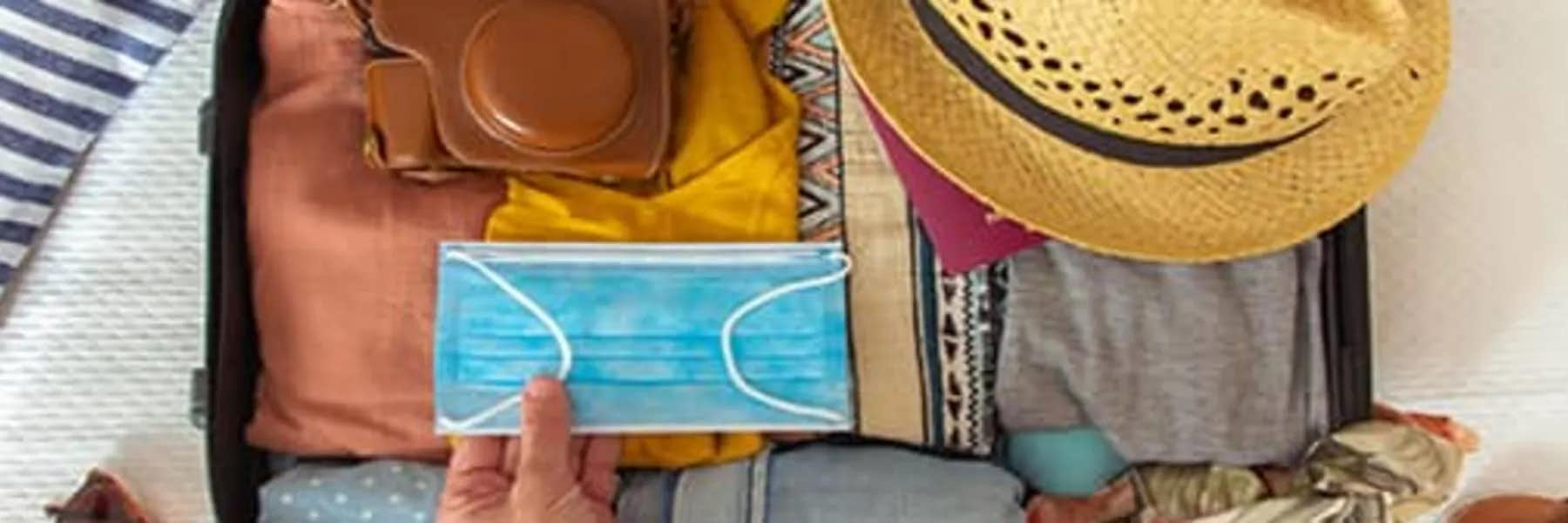COVID-19 Situation - By Country
These figures are provided by the WHO Coronavirus Disease Dashboard and were last updated on 03/11/2021.
| Country | Total Cases | New Cases Reported in Last 24 Hours |
|---|---|---|
| Costa Rica | 207,460 | 188 |
| Mexico | 2,130,477 | 1,877 |
| Panama | 345,236 | 402 |
| Ecuador | 295,114 | 496 |
| Colombia | 2,278,861 | 2,205 |
| Belize | 12,335 | 9 |
| Uruguay | 64,700 | 863 |
| Italy | 3,101,093 | 19,725 |
| Spain | 3,164,983 | 2,186 |
| Portugal | 811,306 | 847 |
| France | 3,864,335 | 22,626 |
| Vietnam | 2,526 | 2 |
| Malaysia | 316,269 | 1,280 |
A Country-By-Country Update on Travel Restrictions
Mexico
By Jason Holland, IL Roving Latin America Editor
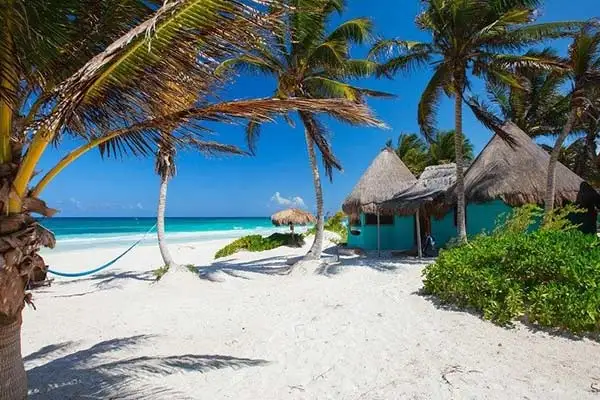
In a time of worldwide travel restrictions and lockdowns, Mexico stands apart.
Mexico never shutdown to U.S. tourists during the pandemic. There is no COVID testing requirement to enter by air or land. You may have seen reports that the border between the U.S. and Mexico is closed. However, in practice travelers from the north have crossed south unimpeded, and U.S. citizens can always re-enter the U.S.
In fact, because of the lack of strict restrictions in place, American tourists especially have been flocking to Mexico for vacations in places like the Riviera Maya, Puerto Vallarta, and Cabo San Lucas, which have always been the most popular beach destinations.
They’re fleeing lockdown back home. The holidays and winter season for 2020/2021 were much more low-key than past years, but fairly busy. And forecasters are predicting a rush of visitors in the rest of 2021. This tourism money coming in is a relief to local workers and businesses. But some fear that keeping the border totally open will lead to more cases.
One thing to keep in mind is that if you do come to Mexico and are flying to the U.S., you will need to secure a COVID test to fly back into the U.S. Fortunately, hospitals and clinics in Mexico have risen to meet the demand. And some hotels and resorts are even offering COVID testing in their facilities to make it as convenient as possible for travelers so they don’t have to take time out of their trip.
Most states and municipalities have implemented an alarm system to let locals and potential visitors know the level of infection in the area: yellow, orange, red (red being the most severe). A spike in cases leads to various restrictions like curfews for bars and restaurants, limited occupancy at eateries and hotels, and mask mandates in public. Large public gatherings have been banned for about a year; no word yet on when they’ll be back.
Shops, stores, and supermarkets require a temperature reading, allow a limited amount of people to eat at a time, and require you to wear a mask. San Miguel de Allende, for example, was heralded by Budget Traveler for its proactive approach to social distancing, mask-wearing, and other anti-pandemic measures.
For the duration of the pandemic, authorities have encouraged people to stay home except for essential activities. But with so many citizens in need of an income, this has been a hard mandate to follow for many.
All that said, as with any travel during this pandemic, think carefully about your trip. Mexico is currently one of the hardest-hit spots with COVID in the world, so medical resources are stretched thin and hospital beds for those with coronavirus are scarce.
There have been 2 million cases and more than 180,000 deaths as of writing, and the country is in the grips of a rising trend. The good news is that vaccines are arriving and the government is putting together distribution plans, focusing on healthcare workers and older residents first.
If you do choose to come, follow local directives, wear a mask in public, and don’t wait until the last minute to find that COVID you need to re-enter the U.S. You don’t want to be caught short.
Panama
By Jessica Ramesch, IL Panama Editor
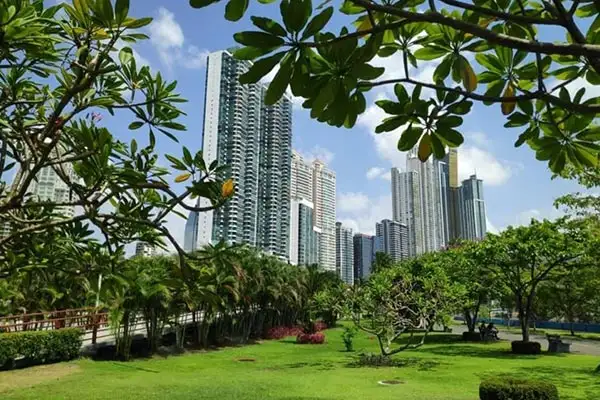
After one of the world’s longest and strictest lockdowns, Panama reopened to international flights on October 12, 2020. Visitors to Panama must present negative Covid-19 test results (obtained less than 48 hours previously) or pay $50 for a test on arrival. Even if you have test results you may be asked to submit to random testing on arrival. Testing at the airport has been quick and efficient.
If you test positive on arrival to Panama, you will be sent to quarantine at a designated hotel. After seven days you will be tested again and allowed to leave if you are negative. Alternatively, you’ll remain in quarantine for 14 days or until you test negative.
If you are hoping to visit soon, your best bet for up-to-the-minute information on flights is to monitor Copa Airlines on social media or sign up for its mailing list by creating a free account at Copa.com. Canadians may want to check with Sunwing (may be offering charter flights/packages direct to Scarlett Martinez airport near Playa Blanca in December), Air Canada, and other major airlines.
Before checking in for your flight to Panama you must complete a health affidavit. You can save yourself some time by doing this prior to travel at https://www.panamadigital.gob.pa/RegistroPacoViajero
To switch the form’s language from Spanish to English, look at the top right corner. You’ll see ES/EN in small font. (ES stands for español. Click EN for English.) If you have questions about the form check out the guidelines posted at the Ministry of Tourism website: https://visitpanama.com/information/travel-guidelines/.
Masks are required by law outside of your home in Panama (they may be removed to eat or drink) and face shields may also be required on public transport. Gatherings of more than ten people are prohibited. If you have been in the UK or South Africa in the last 20 days you cannot enter Panama.
Currently curfew nationwide, Mon to Fri, is 9 p.m.-4 a.m, with a complete lockdown every Saturday and Sunday (only emergency personnel and a few others, such as restaurant/food delivery staff, may leave their homes). Though food delivery is allowed, alcohol sales are prohibited after curfew and during weekend lockdowns.
Travel between districts in Panama is largely curtailed but if you have hotel reservations you can cross checkpoints. If you need to get to the airport or booked accommodations during curfew or weekend lockdown, you may also do so. Just make sure to print out copies of all reservations and have them handy to show to police, along with your passport, if you get stopped.
Beaches have been off-limits for most of the pandemic, but they were allowed to reopen to the public on February 8. There are a few restrictions to be aware of:
opening hours are from 6 a.m. to 4 p.m.
small groups are allowed but should consist of people in the same household bubble (max. seven people).
sale and consumption of alcohol is prohibited
*NOTE: If you travel to western provinces like Chiriquí or Bocas del Toro you may find different/fewer restrictions than in the Panama or Panama West provinces. Regarding small islands like Contadora, check with transport companies as local councils may restrict travel suddenly and/or require a new Covid test.
Flying out of Panama: If you’re planning to visit this year, you may also be wondering about Covid testing for outbound passengers. Now that the U.S. and other countries are asking returning citizens and residents to provide negative PCR tests, Panama has announced that Tocumen International Airport will enable pre-departure testing.
Testing has previously only been available in the pre-immigration arrivals area. Now one of the four laboratories that have been operating at the airport is being relocated to serve travelers heading to other destinations.
At present visitors to Panama are not required to show proof they’ve been vaccinated against Covid-19. However, Panama is participating in the International Air Transport Association or IATA Travel Pass trial for a digital Covid-era travel platform. The IATA app will help passengers store and manage their Covid-19 tests and/or vaccines. The “digital passport” will also incorporate a global registry so travelers can check to see what’s required by the government of the country they plan visit. Panama’s government and premier airline, Copa Airlines, are slated to be the first to trial the program starting this March.
All of the above is subject to change without notice. Double-check websites/social media for updates from airlines/airports, embassies/consulates, government travel advisory issuers, etc., prior to travel. Please be patient, be considerate, & stay safe.
Costa Rica
By Kathleen Evans, IL Coastal Costa Rica Correspondent
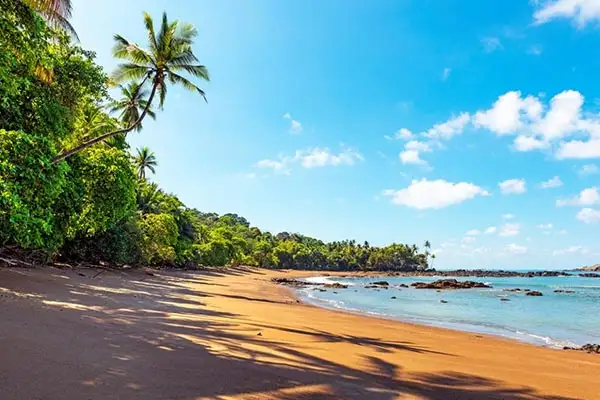
Costa Rica’s air and sea borders are currently open to visitors from anywhere in the world. However, land borders remain closed to travelers with the exception of Costa Rican citizens and legal residents, as well as transporters of goods.
The country does not require a negative Covid test to enter. This requirement was removed back in October 2020. However, to enter, one does need to be aware of the current protocols.
Purchase Travel Insurance
If you are not a citizen or a legal resident, you must purchase travel insurance to cover your medical and lodging costs (up to 14-day quarantine), should you be infected by the virus during your stay. The medical coverage amount needs to be a minimum of US$50,000 (international policy) or US$20,000 (Costa Rican policy). Accommodation coverage is required in the amount of at least US$2000. If you can prove you own a home in Costa Rica, that lodging coverage can be waived.
The cost of the insurance is based on your age and number of days you plan to stay in the country. The longest you can stay on a tourist visa is 90-days. If you buy an insurance policy for a shorter amount of time (for example 12 days), the immigration officer will only stamp your tourist visa in your passport for that specific amount of time based on the insurance length.
There are two Costa Rican Covid insurance providers selling these policies. One being INS and the other is Sagicor. You can also purchase an international insurance plan as long as it meets Costa Rica’s requirements. If you are traveling to Costa Rica from the US, the best one we are hearing from travelers is offered by Trawick International.
Complete the Costa Rica HealthPass Online
The Ministry of Health online form can be completed no earlier than 48 hours of your flight. You will be required to fill in information such as name, age, passport, flights, the address of where you will be staying, verification that you do not have Covid symptoms and that you agree to comply with the quarantine order should you contract the virus during your stay in Costa Rica. They provide an English version.
You will also have to verify which insurance provider you are using. If you have not purchased a Costa Rican policy, you will need to upload it so it can be verified and approved before arrival.
Retrieve QR Code
The system will generate a QR code for you which you can show to officials upon arrival on your smartphone. Another recommended option to is print a copy of the QR code and your insurance policy. Just in case you have any issues with your phone.
Note that many countries require negative Covid tests to travel home. There are testing centers in every region of the country and typically charge $100-$130 for a test. It is always best to check with your country’s embassy for the latest updates regarding arrival protocols and travel warnings.
Colombia
By Nancy Kiernan, IL Colombia Correspondent
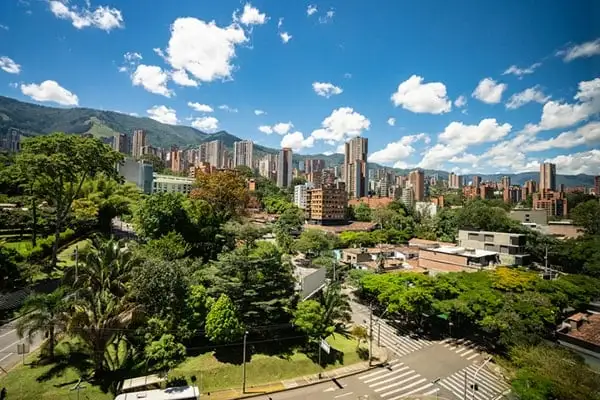
Arriving - Colombia
Effective January 7, 2021, the Ministry of Health modified the regulations for the arrival of travelers from other countries to Colombia.
When entering or leaving the country, passengers must fill out, prior to entering the immigration control posts, the pre-registration Check-Mig, on the Migración Colombia page. This must be completed from 24 to 1 hour before the trip.
The resolution also states that passengers with fever or respiratory symptoms associated with COVID-19 and those who have not previously filled out the Check-Mig application will not be allowed to board.
The law states that there are 2 options regarding Covid testing status to enter Colombia. However, some travelers are reporting that not all airlines are allowing them to board their flights without proof of a negative PCR test, even when they show the airline ticket staff a copy of the law. Airlines can make their own stricter rules.
The options are:
A negative PCR test (nasal swab – NOT rapid test) taken no more than 96 hours before the departure time of the flight. There are no exceptions due to age, meaning even babies traveling with their relatives must have a PCR test. Also, there is no exception if you have been vaccinated.
Passengers who have difficulties in taking the test or in obtaining the test result before the trip MAY be allowed to board the flight without presenting a negative PCR result. They will have to obtain a PCR COVID-19 test as soon as they arrive in Colombia and be under a 14-day quarantine, or until they receive a negative test result. It normally can take 48 hours for PCR tests in Colombia to be processed at a lab and results provided but sometimes can take longer.
Traveling and Restrictions once in Colombia
Domestic travel within the country by land or air does not require testing, nor registration with Check-Mig. Wearing a face mask is mandatory in all public areas (including outside). All seats can be sold on flights and buses. There is no requirement to keep middle seats open.
Any restrictions, curfews, and quarantines are administered on a local level. The city Mayors, in conjunction with the local health officials, make these determinations based on the number of active cases, the occupancy rate of hospital beds, and ICU beds. Lately, when these occurred it was during holiday weekend periods to discourage large numbers of people from congregating.
At the moment, Colombia is pretty much open for restaurants, shopping, tours, services, cafes, clubs, and bars. Face masks are mandatory and they will check your temperature and require use of hand sanitizer before entering.
The only sectors that are still closed are those that would have large public gatherings; such as concerts and sporting events.
Leaving - Colombia
Requirements for testing for flying out of Colombia will be determined by the receiving country, however, Colombia does require that you have registered again with Check-Mig between 24 and one hour before your flight departs.
Effective January 26, 2021 airlines will not permit you to board flights to the U.S. if you do not have a required test or documentation of recovery.
To enter the U.S., you will need to be tested no more than 72 hours before your flight to the U.S. departs. Make sure to be tested with a viral test (PCR or antigen test) to determine if you are currently infected with COVID-19.
If you have had a positive viral COVID-19 test in the past 3 months and you have met the criteria to end isolation, you may travel to the U.S. instead with documentation of your positive viral test results and a letter from your healthcare provider or a public health official that states you have been cleared for travel. The positive test result and letter together are referred to as “documentation of recovery.”
Many local hospitals, clinics, and laboratories offer private testing for travel purposes. The U.S. Embassy is NOT able to administer or pay for COVID-19 tests.
The average cost for Covid-19 testing:
PCR test cost – 290,000 pesos ($82 USD)
Antigen test cost – 130,000 pesos ($37 USD)
Antibody test cost – 90,000 pesos ($26 USD)
Ecuador
By Mark Bradbury, IL contributor in Manta
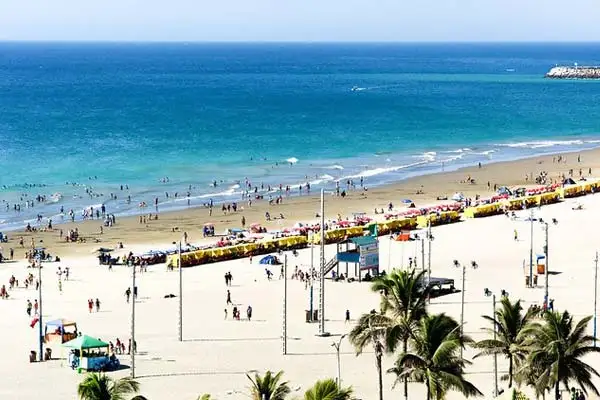
I’m the administrator for a large expat Facebook group on the Coast of Ecuador, and one of the most frequently asked questions lately is whether or not it’s easy to travel to Ecuador; is it safe, is another. After a year of isolation, many of the people who’ve been thinking of coming for a visit to our beautiful country to explore and decide if they might like to re-settle here are now ready to finally board a plane and take the first step. But, what’s it like right now?
The answer to the first question is fairly clear. Anyone traveling to Ecuador from the United States must have a negative result from a PCR test, no more than 10 days before you arrive in Ecuador. The airlines will confirm your test results before allowing you to board, and then, like any other time you’ve traveled, you’ll go through the standard procedures of boarding the plane. Make sure that you are wearing a mask at all times.
When you arrive at either of Ecuador’s International airports in Guayaquil or Quito, you will have to show a printed copy of your test results. You will have your temperature taken, and if it’s high, you may be given an antigen test, or possibly a PCR, and you’ll have to quarantine in a government-approved hotel at your expense until your test comes back negative. If the results are positive, then you will need to stay in the hotel for 10 days, with a negative test result before leaving.
If you have a negative test result, and you show no signs of fever or other symptoms, your entry to Ecuador will be fairly simple. Most of the people who have experienced this have said that it was easy, and that it didn’t take much more time than what was normal before the quarantine.
Once you’re out of the airport, it’s mandatory to wear a mask; it doesn’t matter if you believe in them or not, you need one. The most commonly used mask here is the K-95, available throughout the country. Surgical masks are also widely used, and they are available in pharmacies everywhere.
What’s it like here in Ecuador? It’s still a very beautiful place, certainly one of the most diverse countries in the world. Ecuador has four distinct regions that are unique to each other; the Coast, my home for over five years, the Sierra, the mountain region, the Amazon, an incredible experience, and then, there’s Darwin’s Galapagos Islands, a paradise in the middle of the Pacific Ocean that has to be seen to be believed.
But is it safe? Yes, I think that it is, but you need to do your part to keep it that way. You’ll need to wear a mask, wash your hands continually, maintain social distancing of 5-6 feet, and stay away from large groups of people. The numbers vary throughout the country, with groups of no more than 10 people for events, up to as many as 25 in some of the cities, but it’s to your benefit to keep to yourself as much as you can.
Ecuador is both ready to welcome you, and is eager to show you its bounty! It’s a great time to visit, with prices as low as they have been in quite some time. Come to see why so many of us call this little country home! Maybe you will, too!
Belize
By Laura Diffendal, IL Belize Correspondent
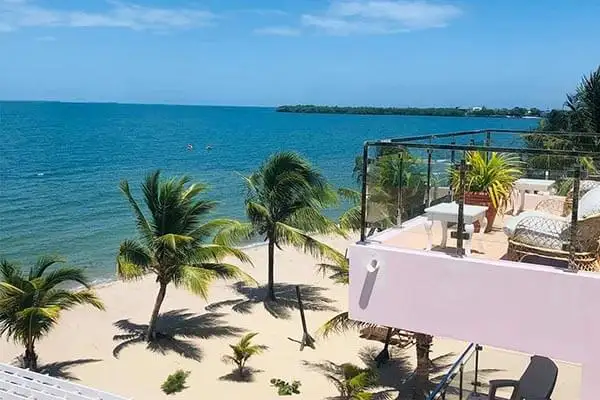
Belize has been an overall wonderful place to spend the last year while dealing with COVID - the low population density and open-air environment have been (previously unknown) key elements to creating a safer atmosphere. Belize officially opened the international airport in October 2020, and since then, they have continuously lessened some restrictions for visitors—as much as can be done safely. The initial reports from the first months of visitors are that Belize is a fantastic place to visit during this time, one of the few countries openly welcoming visitors from the US.
You need to have a PCR negative test when arriving at the Belize International Airport or take one for $50usd when you arrive. You also must download a free app which you can find on the Belize Tourism Board (BTB) website—I also recommend bookmarking this page and using this as the most credible and up-to-date guide when arriving in Belize - https://belizetourismboard.org/belize-covid-19-update-for-travellers/
You can choose from the list of “Gold Standard” Airbnbs and hotels to stay at, which are approved by the “BTB” as adhering to higher-level safety protocols for COVID. The “BTB” is the official agency that has the visitor regulations, so you can be confident you have the latest information.
Many airlines require that you show a negative test before you board the plane, so check with your airline if you were planning on waiting until you got to Belize. Once you show your negative test, you are free to move about the country. Belize and its people have been reported to be consistently adhering to the general safety regulations, which are expected to be followed while in the country—masks are to be worn in public, social distancing and limits on crowds are in place, but you can remove your mask while seated and eating, or while exercising. There have been some random reports of visitors getting fined for not wearing masks in public, or for pushing rules such as by eating while walking, and not wearing a mask. The police here are trying to crack down and get serious on these infractions, and while it is very rare to have a problem with the police for these infractions - the potential for a problem exists only if you do not follow the guidelines, or you refuse to follow a directive given by police, such as to sit while eating, or to put your mask on for any reason.
There has also been a curfew off and on; right now this curfew is 10 p.m., and this is being done country-wide to discourage late-night parties. The curfew was pushed up earlier around the holidays, and recently was pushed back to 10 p.m. Restrictions such as this curfew will be in direct correlation to the news around the world, and also within Belize, about increases in cases. The US recently announced that you will need to show a negative test to return to the US, and the Belize government has done an excellent job of setting up these testing sites at convenient places around the country, so that tourists can easily obtain these results before leaving the country.
Related Articles
The World’s Best Places to Retire
